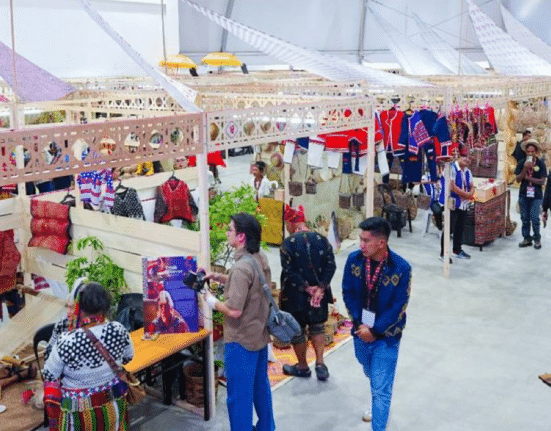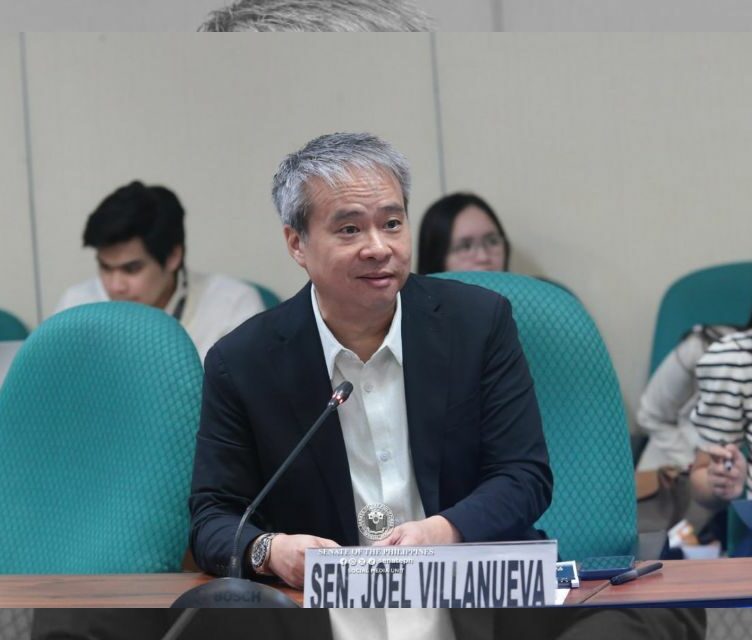IF you have joined an educational trip or a group tour in the country’s capital, there is a higher chance that you have been to the historic “Walled City” of Manila.
Intramuros feels like a step back in time, with the city retaining the original architecture during the Spanish colonial period. This historic gem served as a home to Spanish government officials and elites before it became one of the popular tourist spots in the Philippines.
Due to its historical significance, Intramuros has evolved into a place where the younger generation may learn more about the country’s rich culture and arts through a variety of events and initiatives.
Among them is the highly anticipated “LIKHA 4” artisanal exhibit, which officially opened on Thursday, June 5, at the Foro de Intramuros in Manila.
The fourth edition of “LIKHA” is one of the key highlights of the 127th Independence Day celebration, featuring dozens of master craftsmen, emerging artisans, and local designers nationwide.
First Lady Liza Araneta-Marcos spearheaded the event with a ribbon-cutting ceremony and the ceremonial ringing of the bell to officially open the doors of the “LIKHA 4” exhibit to the public and allow them to witness the Filipinos’ creativity, craftsmanship, and culture.
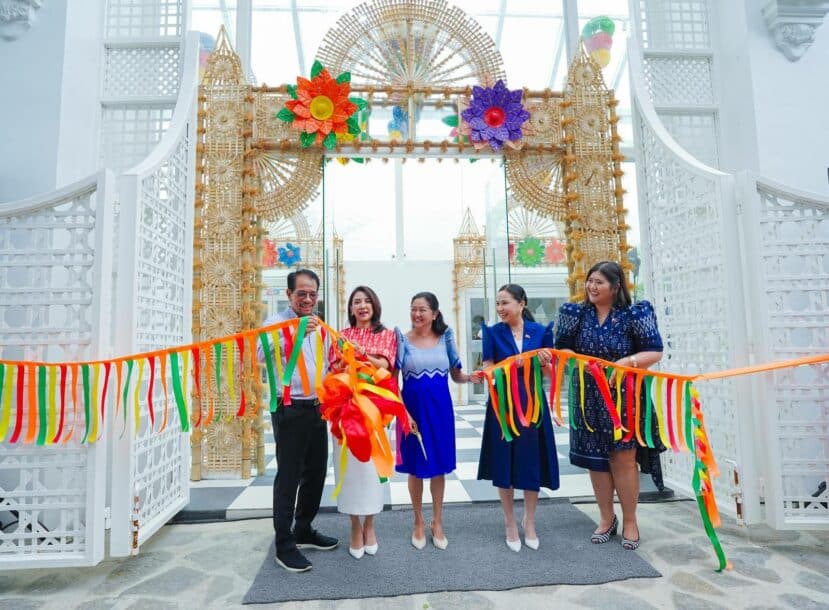
In her speech, Araneta-Marcos thanked those who participated in the event, particularly the featured artisans who traveled from distant provinces to Intramuros to showcase their phenomenal talents and stories. She recalled her encounter with a family from Sarangani when she was inspecting every stall at the venue prior to the exhibit’s formal opening.
“I was talking to them and they told me they walked eight hours from the mountains of Sarangani, down to the city, and then took a bus, another I don’t know how many hours, took the plane to come here,” the First Lady narrated.
“It’s their first time to come to Manila, so I really want to say thank you for joining us,” she added.
She also applauded weavers and other artisans who joined the event, hoping that they would continue to participate in the next “LIKHA” edition.
Meet the artisans keeping their traditional crafts alive
The “LIKHA 4” exhibit displays a mix of traditional and contemporary products—from coasters made of Yakan tennun (woven cloth), to Kamurang baskets, handcrafted Filipino blades, traditional clay pots, and bulul, among many others.
The RepublicAsia team was fortunate to meet the artisans behind these crafts and talk about their works, experiences at “LIKHA 4,” and aspirations for a more promising future for Filipino artistry and craftsmanship.
Evelynda Otong, a Yakan weaver based in Zamboanga, shared that she inherited her weaving skills from her elders.
“‘Yung tennun, which is ‘yung product namin, gawa ito ng mga lola pa namin. Ako po, isa na ako sa mga fourth-generation na Yakan weavers, pinagpatuloy ko lang po kung ano ‘yung pinamana nila sa amin,” she said.
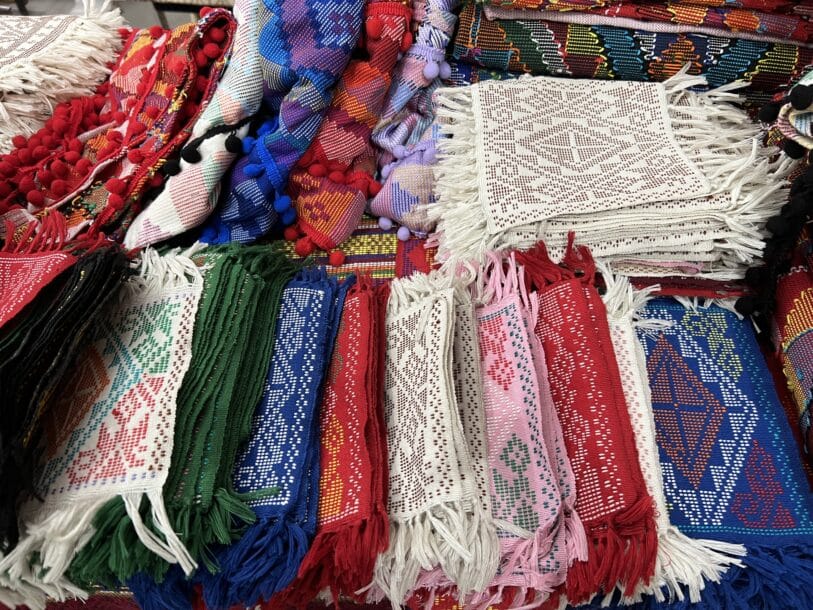
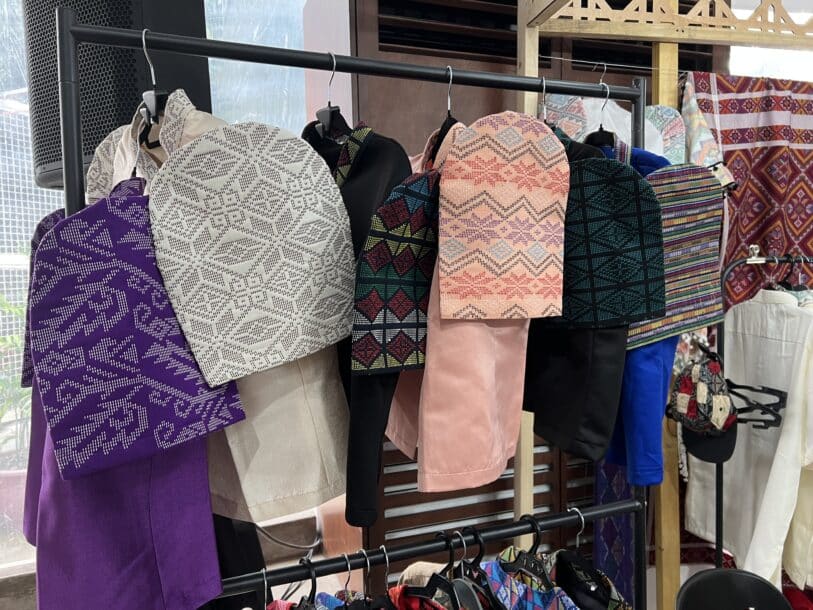
Using a traditional backstrap loom, Otong creates nature-inspired designs, like the Palipattang (rainbow) and Bunga-sama (python), and transforms them into modern, everyday pieces like a coaster. She also incorporates these designs on the sleeves of modern Filipiniana, which she displays at “LIKHA 4.”
The team came across Winnie Dinorog, a former member of the Revolutionary Proletarian Army—Alex Boncayao Brigade who now spends peaceful days in Kabankalan, Negros Occidental weaving baskets and other house decorations using Kamurang and Agnaya plants.
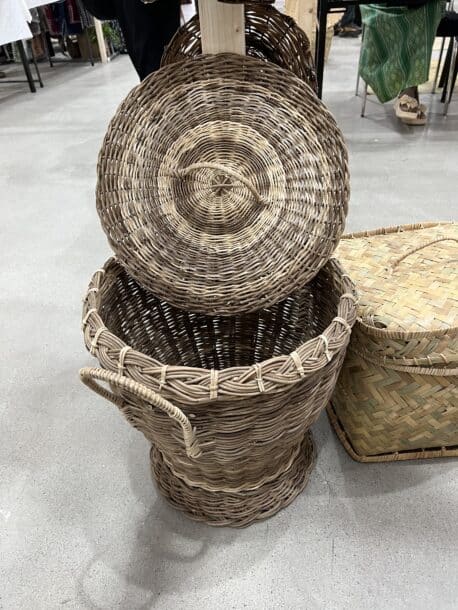
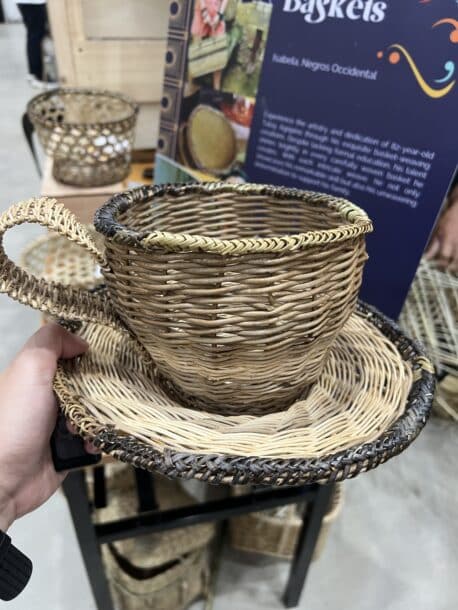
“Ito pong product na ‘to ‘yung tinatawag kong Kamurang. Ako po ‘yung nagtatanim, ako po ‘yung nagha-harvest nito,” he shared.
“Bago ito sa marami—wala pong nakakilala nito eh, kung anong dapat gawin dito. Ako ‘yung naka-discover ng ganitong product,” he continued.
Dinorog said he taught himself how to weave Kamurang baskets, which usually takes him months to finish, starting from the preparations of his materials.
Exhibiting their products a little to the left of Dinorog’s stall were Dondon Dimpas and Wilbur Balverde of Pabu Knife, founded by Cebuano bladesmith Pardy Bugtal. Dimpas and Balverde are both trained by Bugtal as bladesmiths, but Dimpas also came to “LIKHA 4” to represent his own brand called Ursulo Knives.
Dimpas said his brand is focused on creating utility, camping, and hunting knives, all used for outdoor activities.
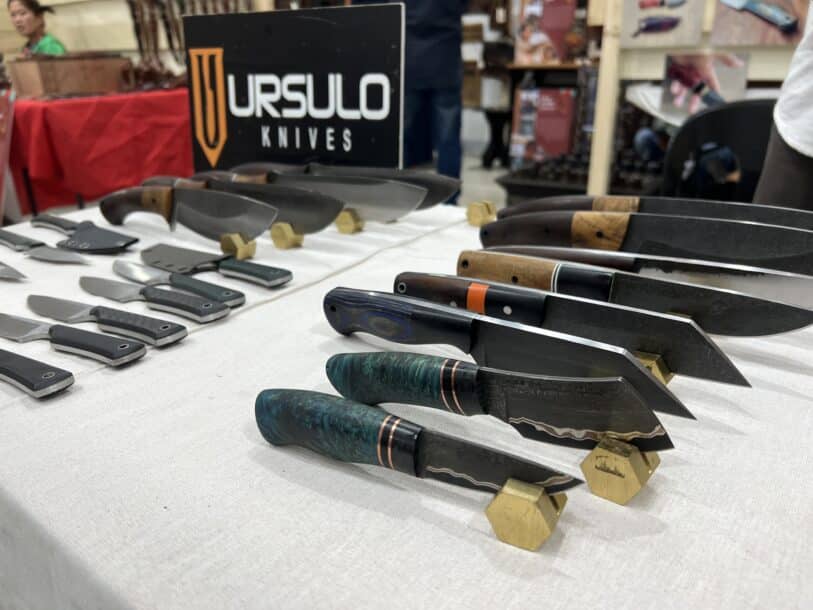
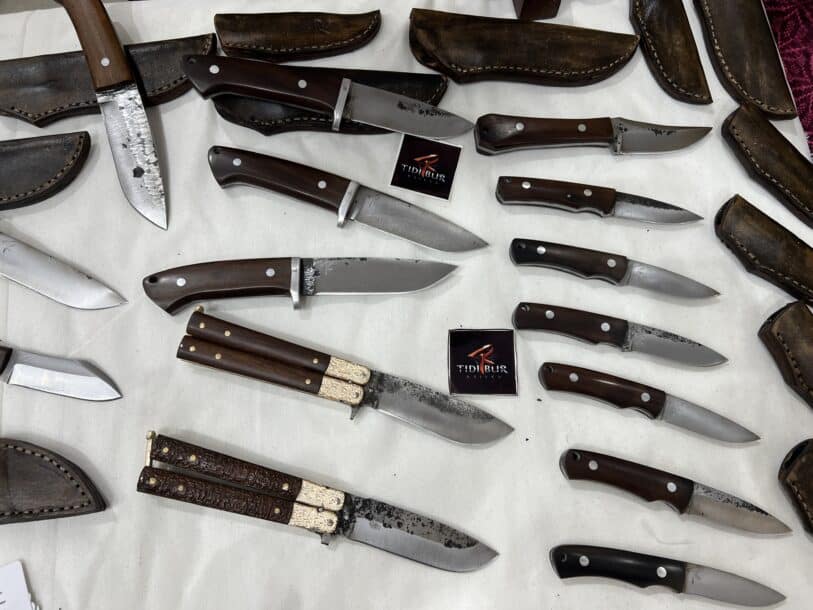
“Before kami gumawa ng knife, kami po ay mga outdoor enthusiasts. We spend our free time outdoors, climbing mountains and other activities. Kaya ang focus po namin ‘yung mga tools na ginagamit namin sa outdoor,” Dimpas stressed.
Balverde, meanwhile, said he also creates camping knives, but he focuses on traditional designs like balisong, or a folding pocket knife.
Based in Lilo-an, Cebu, Pabu Knife is known for balancing Filipino heritage and modern craftsmanship. It uses exotic materials such as stag antler, ivory, and horn for its knife handles.
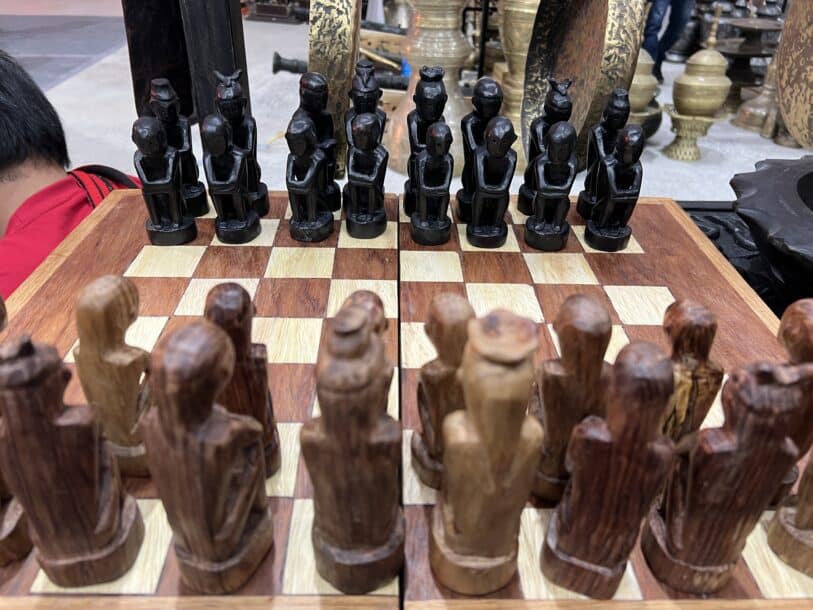

RepublicAsia also met Josie Taradel, a potter from San Nicolas, Ilocos Norte, and Lloyed Niploy, a bulul sculptor from Hingyon, Ifugao, whose goal in participating in the artisanal exhibit is to preserve their culture and tradition and learn more about other artisans’ crafts.
They also expressed gratitude to the Philippine government for allowing them to introduce their outstanding artistry to a wider audience and reach more potential customers.
Introducing Tugaya’s brass casting craft
Every product at the “LIKHA 4” exhibit catches the attendees’ attention because of its intricate and unique designs. It makes one ponder how much time, effort, and hard work artisans put into their crafts.
When the RepublicAsia staff entered the Foro de Intramuros, one of the things that made their heads turn was the banging sound on a metal surface coming from a stall near the entrance.
There, the Gen Z team met Gafar Panumpang Deca, a 53-year-old master artisan from Tugaya, Lanao del Sur, known for his brass casting skills.
“Itong gawa namin na brass ay kami lang gumagawa sa Tugaya. ‘Yung mga ninuno namin sila ang gumagawa dito, kami lang ang mga estudyante,” Deca shared.
Through brass casting, the master artisan creates different traditional Meranaw items like lantakas and betel nut boxes. Deca is recognized for his “old wax” technique which involves melting brass at high heat and using natural materials like Tugaya tree, which can only be found in his hometown, to create molds.
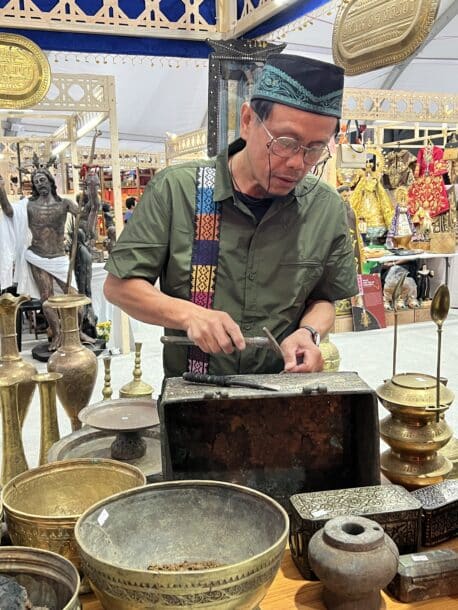
At the time the team saw him, Deca was working on a brass baor. He even showed them the tools and the manual process of adding patterns to the storage chest.
“Magpasalamat ako sa Panginoon dahil alam ko lahat ang mga mix niya at tsaka paggawa ng brass. Mismong ako lang gumawa diyan sa lahat ng nakaparada dito,” he stressed, pointing at his lantaka and gador.

Deca said that his products have been sold in different places in the country, including Davao, Cebu, and Manila.
With his participation in “LIKHA 4,” the master artisan hopes that more young individuals will be interested in learning Tugaya’s centuries-old craft.
Importance of ‘LIKHA 4’
Aside from the featured artisans, the RepublicAsia team also ran into several content creators at the “LIKHA 4” exhibit and asked them about the significance of hosting the event, particularly to Gen Zs.
Many said the exhibit opened their eyes to different Filipino artistry and craftsmanship they had never seen or heard before.
“Sobrang importante nito kasi makikita mo pa rin ‘yung iba’t ibang likha ng mga lokal natin dito, mga community, na makikita mo talagang malalayong lugar pa sila [nagmula] and nag-e-effort sila,” said Bont Bryan Oropel.
“And as a Gen Z, nagugulat ako na ganon pala kakaiba ang mga arts na nakikita ko ngayon dito,” he continued.
For Baninay Bautista, “LIKHA 4” helps the artisans attract more buyers, especially since their products are displayed in a place that many tourists visit.
“Nadala kasi yung iba’t ibang products ng buong Pilipinas in one place lang, and here pa siya sa Metro Manila so mas accessible siya lalo na malapit siya sa mga schools. Dito lang sa Intramuros, tsaka malapit lang sa mga tourist spot,” she said.
Brent Valdez, meanwhile, said he appreciates this government initiative that highlights Filipinos’ masterpieces.
“It’s nice to see all the cultural heritage, ano ‘yung kaya natin ma-i-offer that is world-class,” the GMA Sparkle artist said.
Sophia Valdes agreed with him and said, “It’s important to showcase Filipino pride as well, especially in times like this.”
Favorite items at ‘LIKHA 4’
The Gen Z team also asked these young Filipino content creators about their favorite items at the “LIKHA 4” exhibit.
Dax Augustus Tapay, also known as Architect Dax, said he was impressed by the household items made of capiz shells.
“‘Yung mga chandeliers—anything made out of capiz kasi capiz is really Filipino. As an architect, gusto ko siyang i-apply doon sa mga magiging project ko if I want somehow a Filipino architecture look,” he shared.
Actor Nikki Co told RepublicAsia that his favorite part of the exhibit was the items made of different types of wood.
“For me naman, ‘yung favorite ko sa event na ‘to is ‘yung mga woodwork na ginawa nila. Meron silang ginawa doon na parang one thing relatable sa Christmas natin, one thing relatable sa mga fiesta,” Co said.
He added, “Parang one-piece of wood, ginawa nilang parang—para siyang basket na may mga isda, may mga iba pang products.”
Meanwhile, content creator Cheska Fausto and actress Althea Ablan were fascinated by fashion items like jewelry and bags.
“Since I’m really into like jewelry nowadays, and I’ve seen jewelries made of original mother of pearl shells talaga. I think it’s amazing kasi ang dami natin niyan dito sa Pilipinas eh,” Fausto said.
“Ang ganda pa ng pagkagawa niya, so it’s something that we could actually pass on to generations dahil sa ganda ng quality niya,” she noted.
“LIKHA 4” is open to the public from June 6 to 8 at the Foro de Intramuros in Manila, from 9 a.m. to 6 p.m. Admission is free for all, and walk-ins are allowed.
How useful was this post?
Click on a star to rate it!
Average rating 0 / 5. Vote count: 0
No votes so far! Be the first to rate this post.
We are sorry that this post was not useful for you!
Let us improve this post!
Tell us how we can improve this post?


